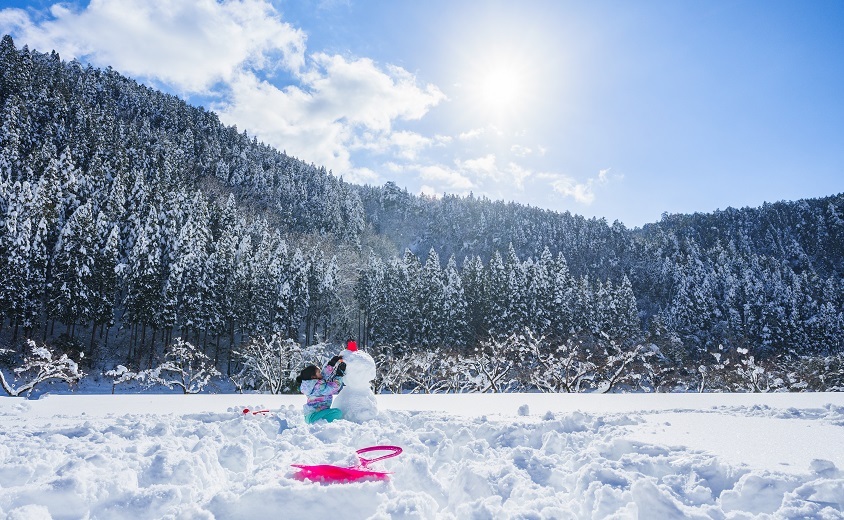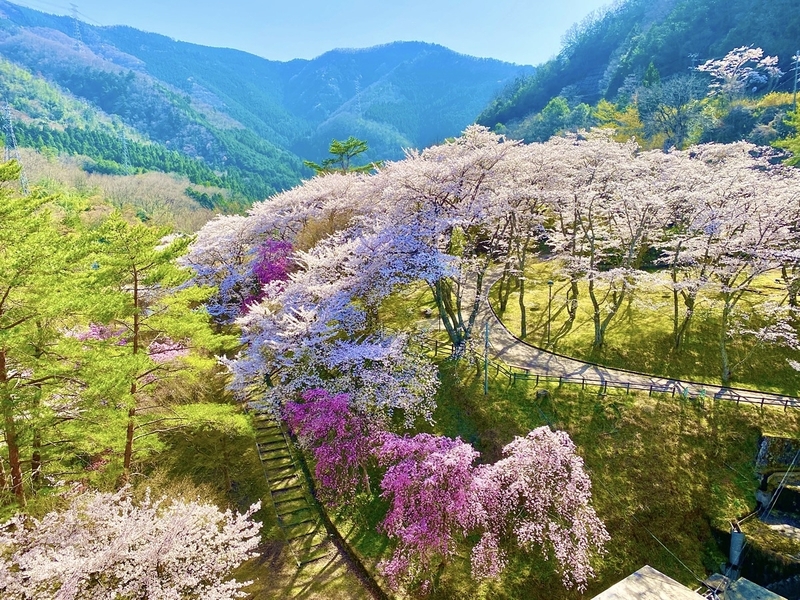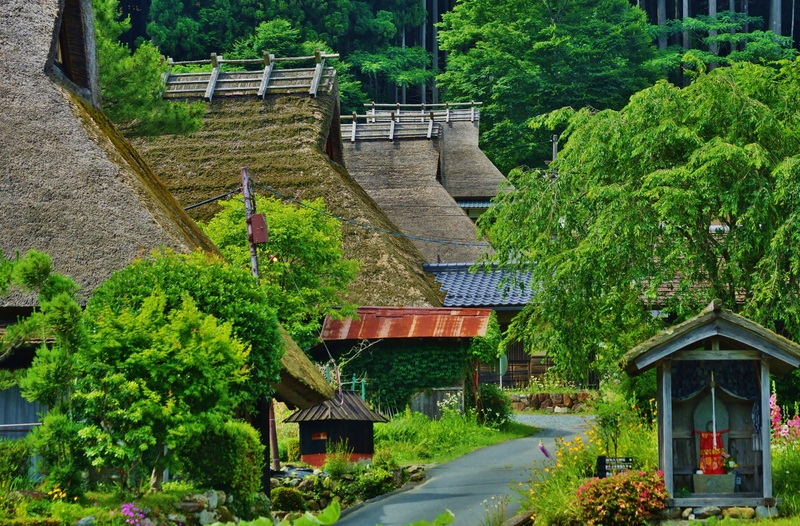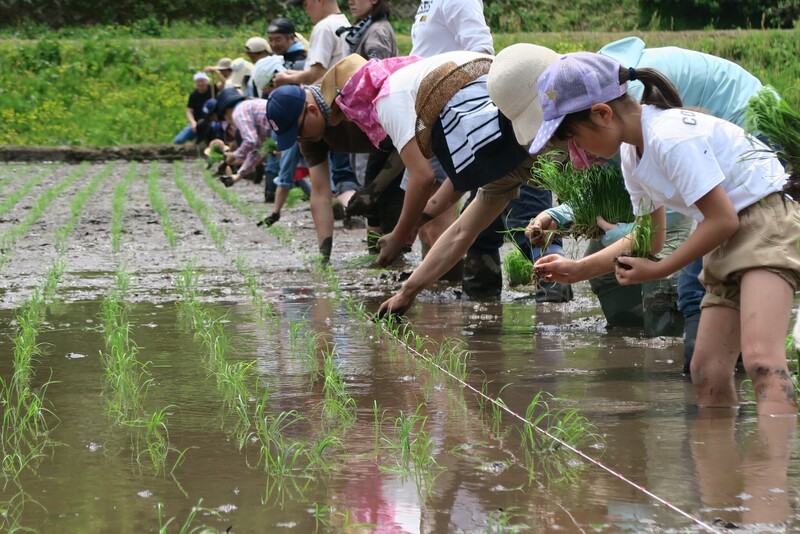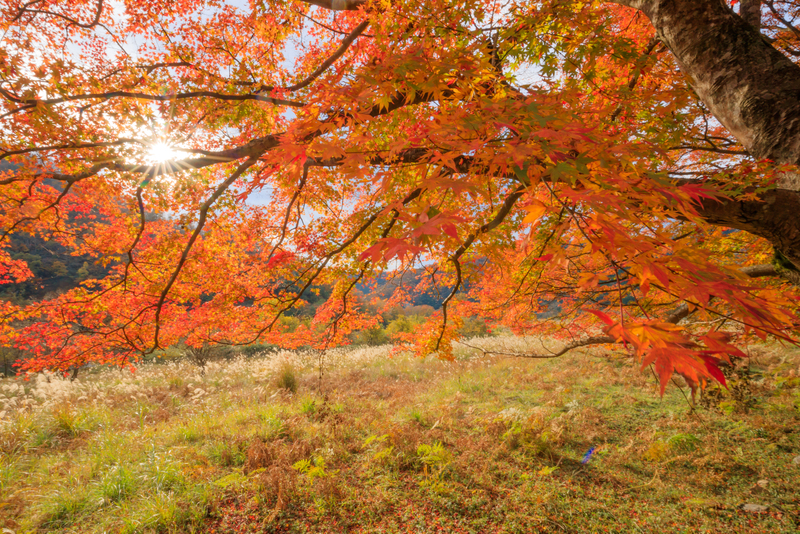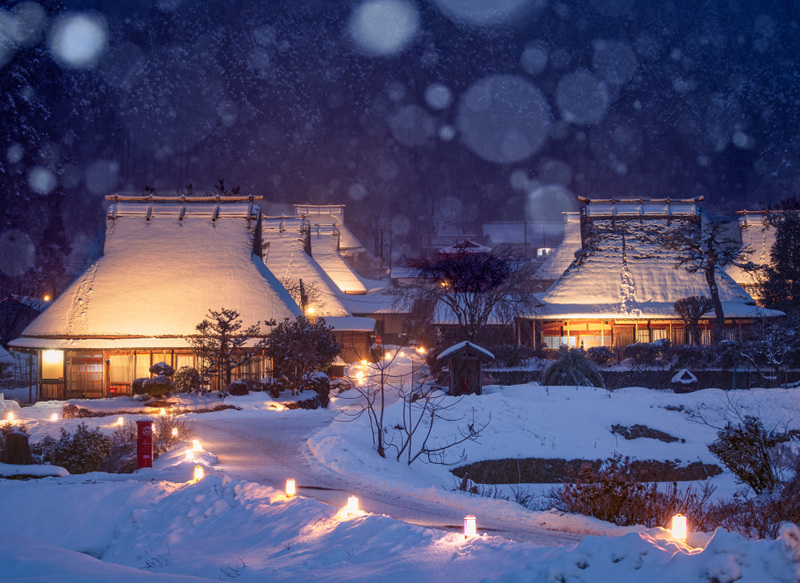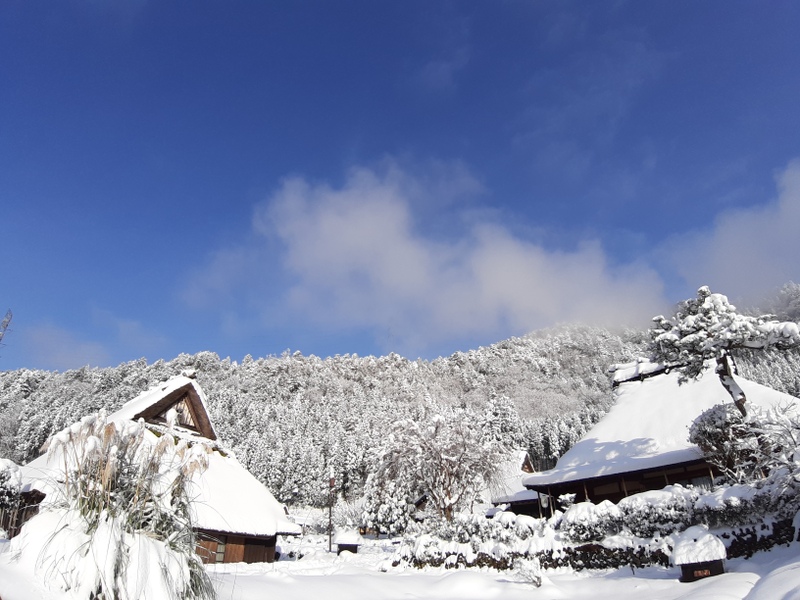If there is one theme that can be felt throughout all aspects of Japanese culture, it is the seasons. The Japanese have made enjoying the seasons into an art form, and if you look at the details whilst in Japan you’ll notice these seasonal tones everywhere: on Kimono patterns, in pottery, on wall hangings and in the food served in restaurants and Japanese homes. Even the colour of the train drivers’ uniforms changes with the seasons in Japan.
Broadly speaking, Japan has the same four seasons that all temperate parts of the world go through, but they can be sub-divided a bit more. This is what a typical year looks like in Miyama.
Spring starts at the end of March, as the cold of winter starts to give way and the snow that has been on the ground for much of the winter melts away. On the higher mountains there can still be some snow until May. As spring arrives a wide variety of flowers and herbs sprout from the previously snow-covered earth. Many of these are edible, and you can find the people of Miyama bent over picking mugwort (Yomogi), which is said to clean the blood and keep insects from biting you, it’s also delicious as fried Tempura.
During late May and early April the temperature will often get up in the high teens (centigrade) during the day, but beware of the cold at night when the temperature drops rapidly. In early to mid-April the cherry blossom (Sakura) appears and it’s time to picnic and celebrate the warmth after the long cold winter. It’s also time to start preparing the fields for the rice harvest.
By the start of May the temperature is often climbing into the mid-twenties during the day and it’s t-shirt weather. This season, known as Shinroku or ‘new green’, is when the deciduous trees put out their new leaves and the hills take on a stunning vivid light green hue.
This is one of the best times to come to Japan and avoid the worst of the cherry blossom crowds, but still get the great spring weather. This is also the time of year that most farmers plant their rice seedlings.
By mid-June it’s hot and starting to get humid, the temperature can be up to the early thirties. Around this time the rainy season begins and typically that means a lot of rain, high humidity and not much fun to be had outdoors.
Around mid-July the rainy season typically gives way to summer and it’s genuinely hot and humid – in the mid-thirties or even high thirties in Kyoto or Tokyo City. This heat will continue throughout August, and the Japanese like to head to mountain retreats like Miyama during this time to avoid the worst of the summer heat and cool off in the river. In Miyama there is usually a cool breeze blowing and at night even in mid-summer you will need a blanket, whereas in Kyoto City you cannot sleep without air conditioning. The rice plants grow tall and green and start forming the rice at the top of their stalks.
There are a lot of festivals during the summer such as Obon (15th August), in which people dance to welcome the spirits of their ancestors back from the spirit world. Each area of Japan has its own traditional version of the dance and Miyama has several, depending on the village in question. On the 16th the spirits must return to the other world and in Kyoto City they are sent on their way by the Daimonji Yaki – fires that are lit up around the cites surrounding mountains.
Throughout July and August the racket of teams of cicada can be heard throughout Japan, their cacophony and big bellowing white clouds are the symbols of the Japanese summertime. Food wise, Nagashi so-men is a favourite summer treat – this consists of thin white noodles that are cooled down using mountain water flowing down a slide made of a giant bamboo stalk split in half. More than just a meal, it’s an event, a bit like bobbing for apples in that it’s quite hard to fish out the noodles with chopsticks as they flow by.
From late August the weather slowly starts to cool, and by September you can feel the natural world beginning its preparation towards the winter. The rice crop is now tall and a deep golden colour. An autumn breeze rippling through a large rice field is a magnificent sight.
Late September and October are the harvest season, so there is plenty of activity in the fields of Miyama and freshly harvested rice to be had, amongst other autumn treats like chestnuts and Kabocha squash. The weather is very comfortable, usually in the mid-twenties during the daytime. The cicadas give way to the autumn insect chorus which is a symphony of various ringing and chirping noises somehow beautifully harmonized. Suzumushi (which translates as ‘little bell insects’) make a melodic ringing sound. They have become rare in many cities, but they still abound in the mountains of Miyama.
From late October through November comes the turning of the autumn leaves.
This is a gradual process of the mountains becoming flushed with yellow, orange and brown hues that reaches its peak in late November. By that time the cold winds are starting to blow and you can feel winter on its way.
This is a popular time of year to eat Saba or mackerel. In Miyama Narezushi is the most traditional way to eat mackerel, but it’s fermented in such a way as to have quite a sour taste, like blue cheese it takes some getting used to. This is the start of the mating season for the deer, which outnumber people in Miyama, and the male bucks can be heard calling from the forest with a shrill call that echoes through the valleys.
December is cold with the temperature rarely getting above 10 degrees during the day and by the 20th the snow usually arrives. Japan gets a lot of snow and Miyama usually gets its fair share, being close to the Japan Sea. If you are lucky you can see the mountains and thatched houses blanketed in white, but beware because big snow storms can cause travel problems even in well-equipped Japan.
January and February mean more snow and low temperatures. This is a good time for snow shoeing in Miyama and eating wild boar hotpot. There are also a number of winter festivals to enjoy like the snow lantern festival at Miyama’s thatched village (Kayabuki no Sato).
Then again through March the winter gives way to the coming of spring and the cycle continues.
Whatever season you choose to visit, Japan has much to offer. Although the cherry blossom and autumn leaves attract the most tourists, the Shinroku (‘new green’) in May and the ideal temperatures of September and early October are a great time to enjoy a slightly less crowded Japan. If you come to Japan in mid-summer, a trip to a mountainous region such as Miyama will reward you with much cooler temperatures and a refreshing breeze.
The ancient Japanese culture has such a strong connection with the forces of nature, one that you can really feel when you are here. Although this connection has become less evident amidst the convenience of the big cities, the lifestyle in the countryside still revolves around and rejoices in the changing of the seasons.








